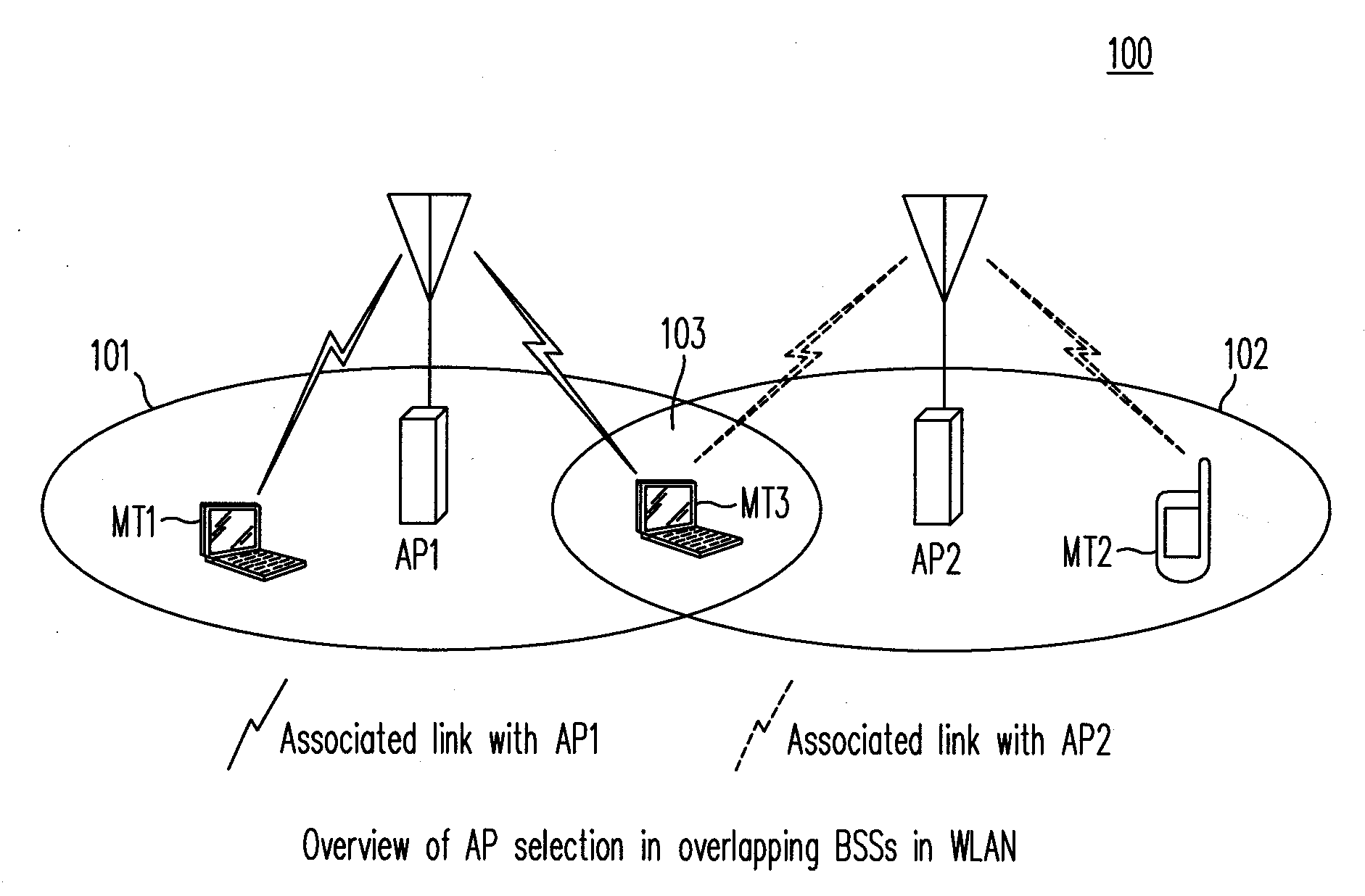Method and Apparatus for Access Point Selection in Wireless LAN
a wireless lan and access point technology, applied in the field of mobile computing, can solve problems such as experience a longer delay, achieve the effects of enhancing the performance of high priority services, improving both the total wlan throughput and load balancing, and being more sensitive to delay characteristics
- Summary
- Abstract
- Description
- Claims
- Application Information
AI Technical Summary
Benefits of technology
Problems solved by technology
Method used
Image
Examples
Embodiment Construction
[0028]The present invention provides a QoS-aware AP selection method in a WLAN. In one embodiment, the STA selects an AP which provides the least hidden terminal effect from other STAs having equal or higher priorities relative to the STA's own access category (AC).
[0029]FIG. 1 illustrates a WLAN 100 to which a method of AP selection according to the present invention is applicable. As shown in FIG. 1, WLAN 100 includes at least access points, AP1 and AP2, which provide service on different channels without co-channel interference. Coverage areas for access points AP1 and AP2 are overlapping, as indicated by coverage areas 101 and 102 (in solid lines). Mobile terminals MT1, MT2 and MT3, each using different qualities of services, access WLAN 100. For example, mobile terminal MT1 uses a voice-over-IP (VoIP) service, and is shown associated with access point AP1. Mobile terminal MT2, for example, uses a “best effort (BE) service and is shown associated with access point AP2. Mobile te...
PUM
 Login to View More
Login to View More Abstract
Description
Claims
Application Information
 Login to View More
Login to View More - R&D
- Intellectual Property
- Life Sciences
- Materials
- Tech Scout
- Unparalleled Data Quality
- Higher Quality Content
- 60% Fewer Hallucinations
Browse by: Latest US Patents, China's latest patents, Technical Efficacy Thesaurus, Application Domain, Technology Topic, Popular Technical Reports.
© 2025 PatSnap. All rights reserved.Legal|Privacy policy|Modern Slavery Act Transparency Statement|Sitemap|About US| Contact US: help@patsnap.com



